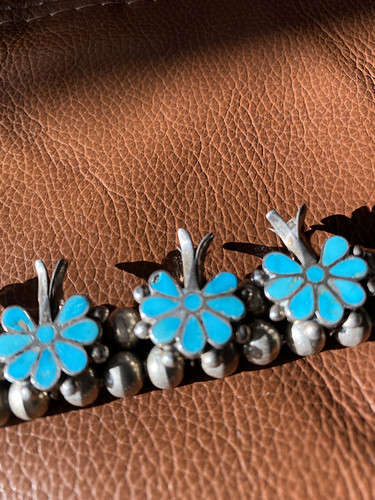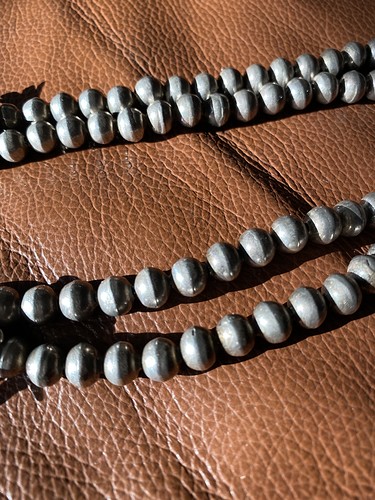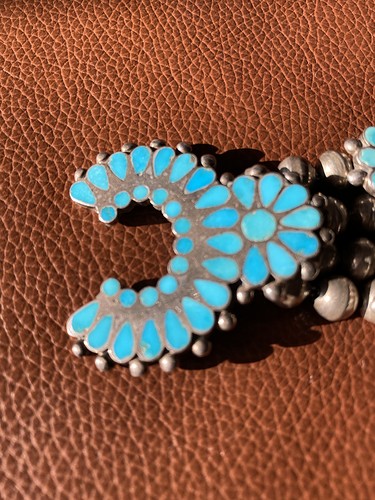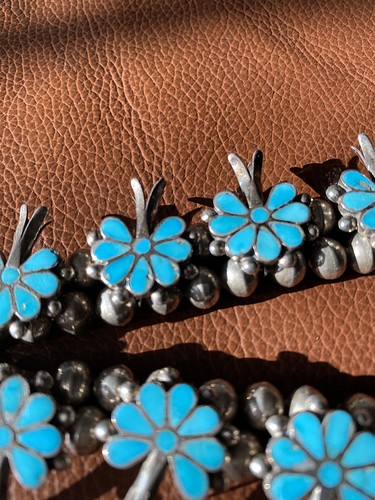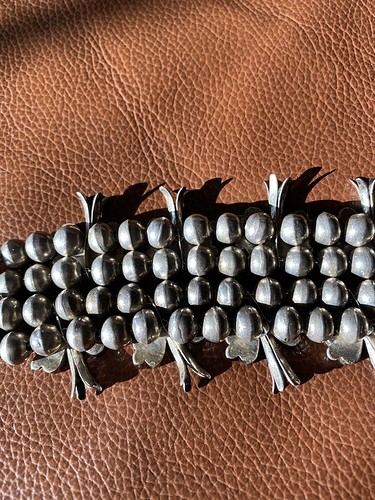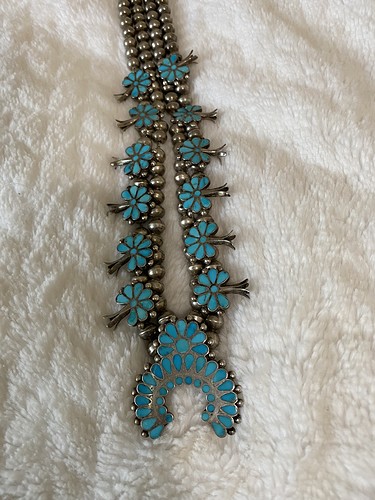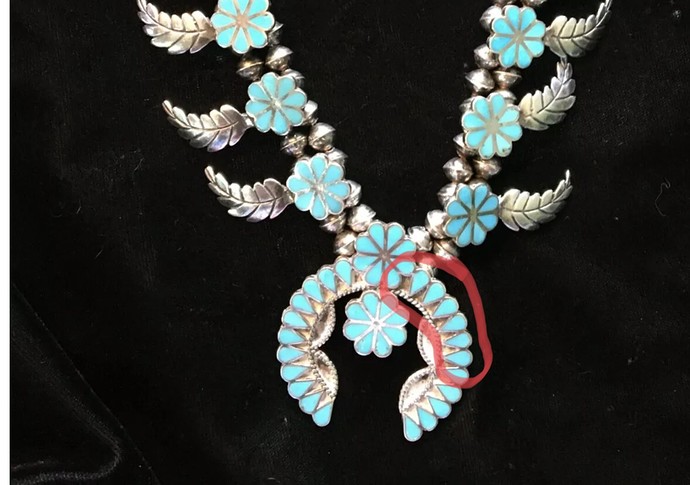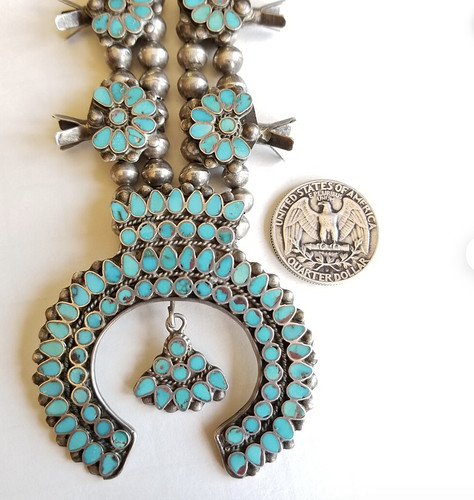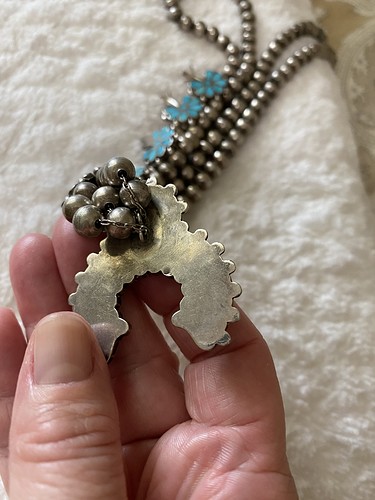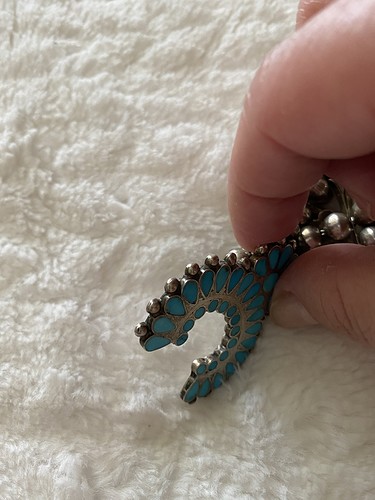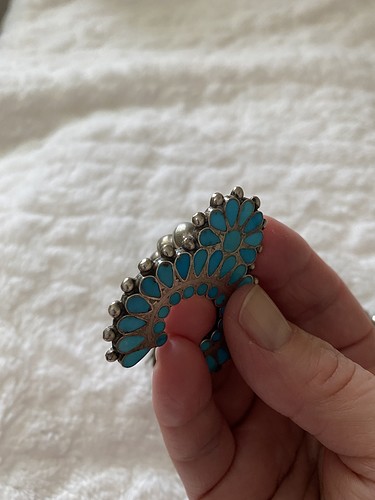Hi everyone! I just purchased a squash blossom necklace from an antique store and I’d like more information on it. I wondered if I paid a good price and guesstimation of age. Thank you 
It weighs 109 g if that’s any help.
One last thing, I’m almost certain it’s been restrung.
That’s a nice one. Dishta or Dishta style flush inlay. Jason is the one to ask about this one, but my guess would be 1940’s maybe a little earlier or later. How much did you pay if you don’t mind me asking?
I paid $500 for it in an antique store in Niles Michigan.
Pretty! I’d like to know if the beads are handmade.
They look handmade to me.
Dishta style vs. Dishta themselves, and I think 1950s onward vs earlier. Would need better nonflash photos to see this better.
The lack of visible channels, especially in the naja, is either just a matter of these photos or a question concerning how handmade it is. The character of the turquoise is also hard to see here.
I didn’t use flash photography but it was in direct sunlight. Here are a few photos and indirect light.
Would you describe what you mean by “visible channels”? I’d like to learn more - Thanks
I pulled another similar necklace photo off of eBay. You’ll notice with that squash blossom there are small bezels around each drop shaped turquoise. There are spaces in between that do not have the sterling silver. In the photos I uploaded you can see where they filled in that space with silver in my necklace. Mine is hand made.
In authentic Zuni channel inlay, stones are set inside silver channels, i.e., vertical walls of thin silver that function as bezeling. You should be able to see silver walls between the stones.
There are less labor intensive/cheaper/machined ways to achieve this look, and with metal other than sterling, so it’s something to pay attention to.
That bezeling you describe is exactly what you do want to see. Dishta:
That said, it’s possible that Dishta items were made with slight differences in technique over time. Maybe @Jason could take a look.
Thanks for taking the time to explain. Much appreciated!
Thank you for all your insight!
I can see what you are talking about. Some of the channels around the pear shaped turquoise on the left side of your naja are visible and as you move to the right, they blend in with the surrounding silver. I really like the look of your necklace. The turquoise pears are nicely proportioned if you know what I mean. I like the absence of twisted wire and the drops along the edge are nice and distinct. Can you tell if the drops were applied? Very pretty.
It kind of looks like the back plate had sections for the drops and then drops were applied to top of those little sections
I had the same thought as @chicfarmer. The naja doesn’t look right for handmade Dishta style work, almost like it was cast as a single piece.
